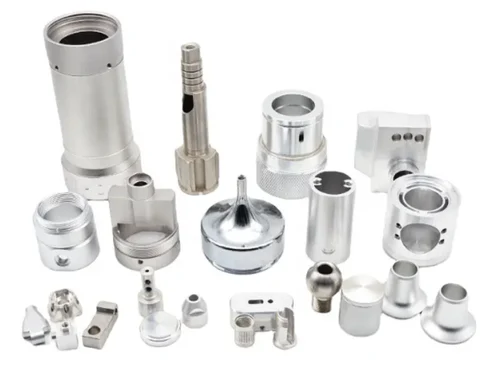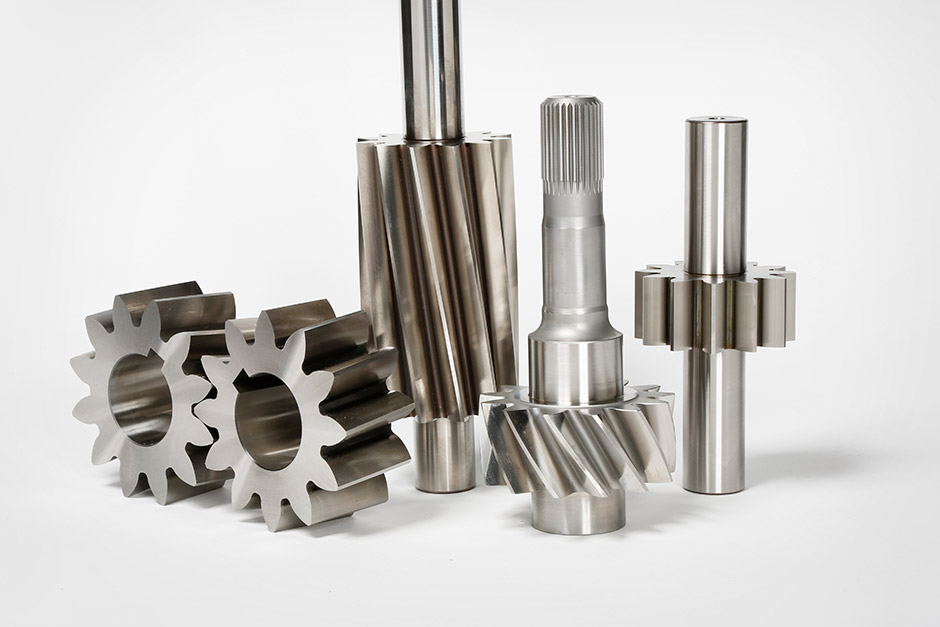In today’s globalized marketplace, sourcing industrial components from cost-effective yet reliable regions has become a strategic necessity for U.S.-based manufacturers. India, with its rapidly growing manufacturing sector, skilled workforce, and government-supported infrastructure development, is emerging as a top alternative to traditional suppliers like China. Importing industrial components such as CNC machined parts, sheet metal components, and precision-engineered parts from India can significantly reduce production costs while maintaining high standards of quality.
However, the import process involves multiple steps—from supplier selection to quality checks, compliance with U.S. regulations, and shipping logistics. This comprehensive guide aims to provide clarity and insight into importing industrial components from India to the U.S., ensuring a smooth and successful sourcing experience.
Why Choose India for Industrial Component Sourcing?
India is steadily becoming a top choice for global manufacturers, thanks to several key factors:
- Affordable Production: With lower labor costs and operational expenses, India offers a highly economical option for sourcing industrial components.
- Skilled Workforce: India produces millions of engineers annually, specializing in mechanical, electrical, and industrial disciplines.
- Quality Standards: Indian manufacturers are increasingly adopting ISO 9001 certification, ensuring global compliance and quality.
- Government Support: Initiatives like Make in India and PLI schemes (Production Linked Incentives) promote exports and high-quality production.
- Diversified Capabilities: India supports a wide array of industries, including automotive, aerospace, medical devices, and consumer electronics.
By leveraging India’s strengths, U.S. businesses can achieve lower manufacturing costs without compromising on quality or compliance.
Key Industrial Components Commonly Imported from India
U.S. companies import a wide range of precision components and industrial parts from Indian suppliers, including:
- CNC Machined Parts
- Sheet Metal Fabrications
- Forged and Cast Components
- Electrical and Electronic Assemblies
- Injection Molded Plastics
- Fasteners and Connectors
- Custom Fabricated Assemblies
These parts serve critical functions across industries such as oil & gas, defense, industrial automation, and agricultural equipment.
Step-by-Step Guide to Importing Industrial Components
1. Define Your Component Requirements Clearly
It’s essential to fully define your product specifications and requirements before reaching out to potential suppliers, ensuring clear communication and accurate production outcomes. This foundational step ensures there are no ambiguities when communicating with manufacturers and sets the stage for accurate quotations and successful production. Prepare detailed technical drawings or CAD files, list specific material specifications, and outline expectations around surface finishes, tolerance levels, and batch quantities. It’s also important to mention any relevant compliance standards such as RoHS, REACH, or ISO 9001. Proper documentation helps manufacturers evaluate feasibility and ensure they can meet your exact needs without costly rework or delays.
2. Choose a Reliable Manufacturing Partner in India
The success of your import strategy largely hinges on choosing the right manufacturing partner in India. Collaborating with an experienced and dependable supplier ensures better quality control and smoother operations. Look for suppliers with a solid track record in precision manufacturing, especially those experienced in exporting to the U.S. They should offer transparent pricing models and demonstrate strong quality assurance systems. Prioritize manufacturers with certifications like ISO 9001, IATF 16949 for automotive, or AS9100 for aerospace standards. The presence of in-house quality control facilities is a strong indicator of a supplier’s ability to maintain consistency and deliver components that meet international standards. Vetting your partner thoroughly can save significant time and costs in the long run.

3. Request for Quotation (RFQ) and Begin Prototyping
Once you’ve shortlisted potential suppliers, the next step is to issue a detailed Request for Quotation (RFQ). When reaching out to suppliers, your RFQ should clearly define all technical requirements, delivery schedules, and quality benchmarks to avoid confusion and set accurate expectations. Ask for unit and batch pricing, as well as clear lead times for both prototyping and full production runs. If prototyping is part of your sourcing plan, confirm the costs and expected timeline for delivery. You should also inquire about inspection methods and whether they provide quality reports such as First Article Inspections (FAI). Be sure to clarify payment terms and preferred Incoterms (e.g., FOB, CIF, DDP) to avoid misunderstandings regarding responsibility for freight, duties, and customs handling.
4. Conduct Quality Assurance and Factory Audits
Before signing a production contract, conduct thorough quality assurance checks and, if feasible, arrange for factory audits. You can perform quality evaluations either through virtual walkthroughs or by hiring a reputable third-party inspection firm based locally. These assessments help verify the supplier’s capabilities and standards. Evaluate sample components or prototypes carefully to assess if the manufacturer meets your technical and aesthetic standards. Review documentation related to their quality systems, such as ISO certifications and internal inspection procedures. This is also the right time to assess the factory’s production capacity, equipment capabilities, and overall working conditions. Doing this upfront can help avoid costly surprises and production setbacks later in the process.
5. Finalize Contract Terms and Compliance Documentation
After choosing your supplier, it’s vital to formalize the partnership with a comprehensive contract. Clearly outline clauses around intellectual property protection, non-disclosure agreements, delivery deadlines, and penalties for delays or quality issues.Contracts should clearly state the terms for warranties, rework obligations, and dispute resolution mechanisms to protect your interests and avoid future misunderstandings. Importantly, ensure the components are manufactured in compliance with both Indian export standards and U.S. import regulations. This includes proper classification under the Harmonized Tariff Schedule (HTS), meeting Customs and Border Protection (CBP) requirements, and obtaining necessary FDA or FCC certifications if your components fall under regulated categories. Verifying that all import and export documents are correctly prepared and fully completed is crucial for a smooth transaction.Well-prepared documentation not only ensures legal compliance but also facilitates faster customs processing.
6. Plan Your Shipping and Logistics Strategy
Choosing the right shipping method plays a significant role in balancing cost and lead time. If rapid delivery is critical, air shipping provides the fastest solution, though it typically involves higher expenses compared to other methods.It’s best suited for compact consignments that need to be delivered within a short timeframe. For large, heavy, or bulk orders, ocean freight is more economical but requires longer transit times. Engage with reputable freight forwarders or logistics providers who specialize in international trade and can help with customs clearance, insurance, and last-mile delivery. It’s important to factor in transit risks, port handling times, and potential delays during peak shipping seasons. A well-planned logistics strategy ensures your components arrive safely and on schedule.

7. Navigate U.S. Customs Clearance Effectively
The final stage in the importing process is clearing your goods through U.S. customs. This step requires accuracy and proper documentation to avoid delays or unexpected costs. Essential documents include the Commercial Invoice, Bill of Lading, Packing List, Certificate of Origin, and Product Compliance Certificates. These documents prove the legality and value of the shipment and help customs agents assess applicable duties and taxes. Ensure your components are correctly classified under the right HTS code, as errors can lead to misapplied tariffs or penalties. Working with a certified customs broker can simplify this process and help you stay in compliance with evolving trade regulations.
Key Considerations When Importing Industrial Components from India
| Step | Key Action Items | SEO Considerations |
| Define Requirements | Technical specs, tolerances, batch size | Precision components, industrial sourcing |
| Supplier Evaluation | Certifications, capacity, export readiness | India manufacturing sector, ISO 9001 |
| Request Quotation | Price, lead time, payment terms | Global sourcing, CNC machining quote |
| Prototype Review | First article inspection, testing reports | Quality assurance, CNC machining services |
| Final Contract | IP protection, Incoterms, delivery clauses | Trusted supplier India, custom components |
| Logistics Planning | Freight method, insurance, tracking | Supply chain management, freight India USA |
| U.S. Customs Clearance | Documentation, HTS code, duties | Import regulations USA, industrial import |
Potential Challenges and How to Address Them
Importing industrial components from India to the U.S. offers cost savings and access to high-quality manufacturing, but it also comes with a few challenges. Being prepared helps ensure smoother operations and better results.
1. Quality Inconsistencies
Challenge : Inconsistent dimensions or finishes can disrupt your supply chain.
Solution : Partner with Indian manufacturers offering in-house quality checks, ISO 9001 or IATF 16949 certifications, and CMM inspections. Request prototypes or third-party reports before mass production.
2. Customs and Regulatory Delays
Challenge: Missing documents or incorrect classifications can cause delays at U.S. ports.
Solution: Work with experienced customs brokers. Ensure proper documentation (e.g., HTS codes, compliance certificates) and understand U.S. CBP and FDA requirements if applicable.
3. Hidden Costs
Challenge: Unexpected fees can inflate your total landed cost.
Solution: Calculate all costs upfront—duties, shipping, insurance, and warehousing. Ask for Incoterm-based quotes (e.g., FOB, CIF, or DDP) to make better financial decisions.
Partner with HanaV for Precision Manufacturing
Looking for a reliable precision manufacturing company in India with a strong track record of serving U.S. clients? HanaV is your trusted partner for high-quality industrial components, engineered to meet the strictest international standards. We specialize in CNC machining, sheet metal fabrication, and the production of custom industrial parts tailored to your exact specifications. With ISO 9001-certified processes and a commitment to end-to-end quality assurance, HanaV delivers consistent results whether you’re sourcing small-batch prototypes or high-volume production runs. Our export-ready operations ensure seamless logistics and documentation, reducing lead times and simplifying your U.S. customs clearance process. At HanaV, we prioritize tight tolerance machining, on-time delivery, and cost-effective pricing to help you stay competitive in today’s fast-paced manufacturing environment. 👉 Contact 📞 +91 9148785173 🌐 www.hanav.in 📧 sales@hanav.in for precision Manufacturing.
Conclusion
Sourcing industrial components from India brings notable benefits in terms of affordability, quality, and production scalability. Yet, to achieve consistent success, it’s vital to choose dependable suppliers, stay informed about regulatory requirements, and maintain clear, ongoing communication. By implementing a well-organized sourcing strategy and collaborating with trusted manufacturers like HanaV, U.S. businesses can strengthen their supply chains and remain competitive in the global manufacturing landscape.The Indian manufacturing sector is not just an alternative—it’s a long-term opportunity for growth and innovation. So, whether you’re sourcing precision components, custom metal parts, or CNC machining services, India has the capabilities and the infrastructure to meet your needs.
Now is the right time to diversify your supply chain and explore the benefits of sourcing from India.

